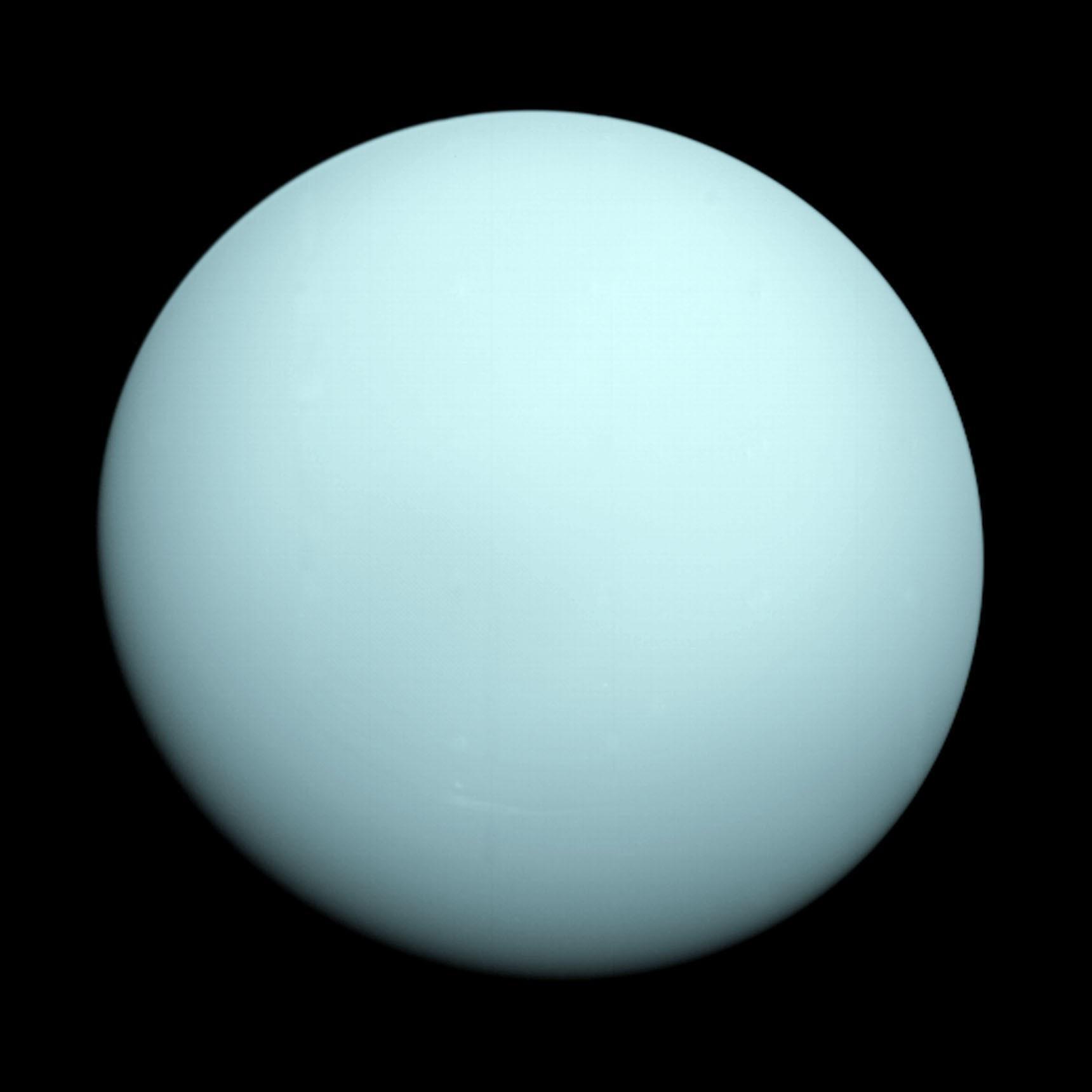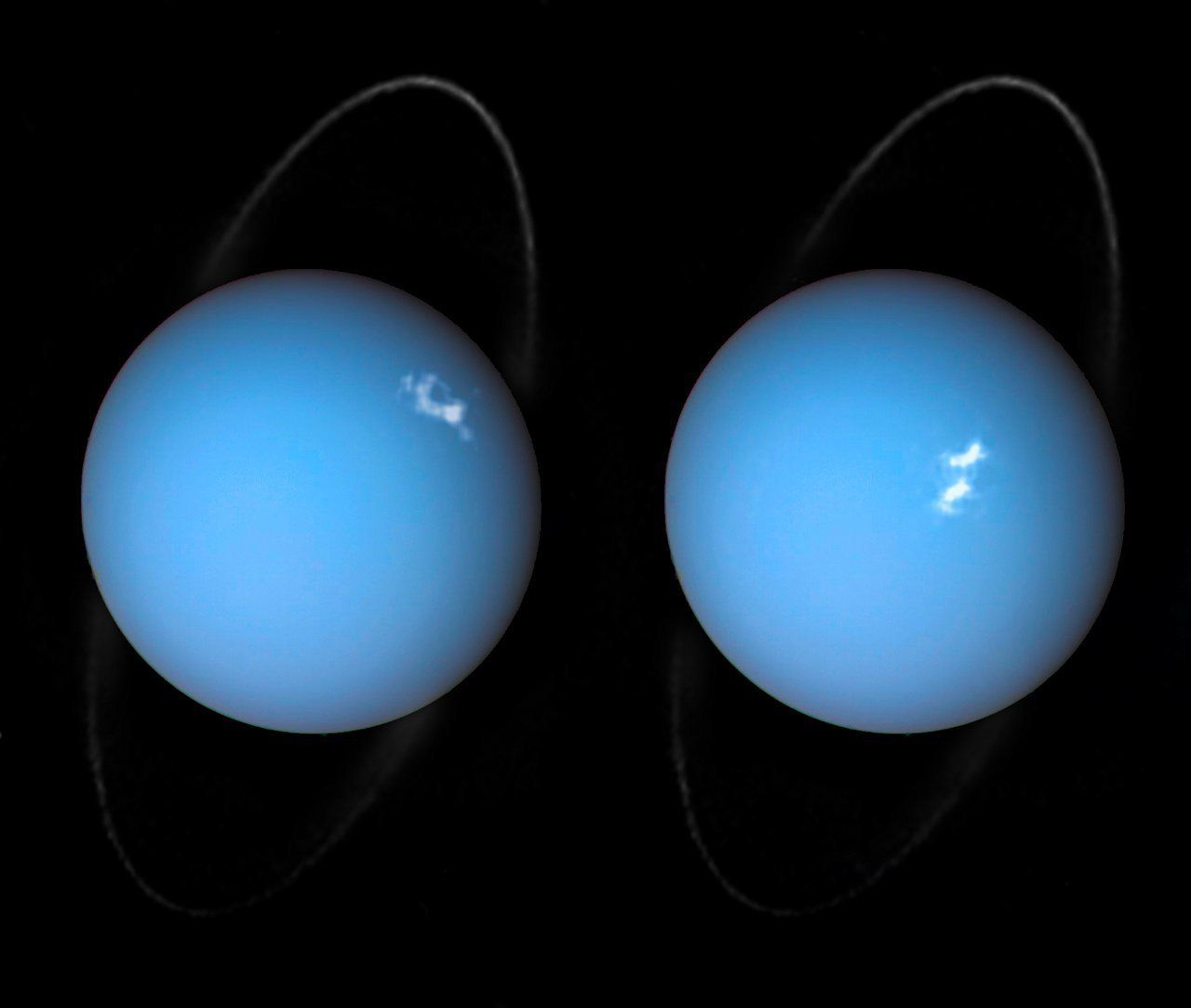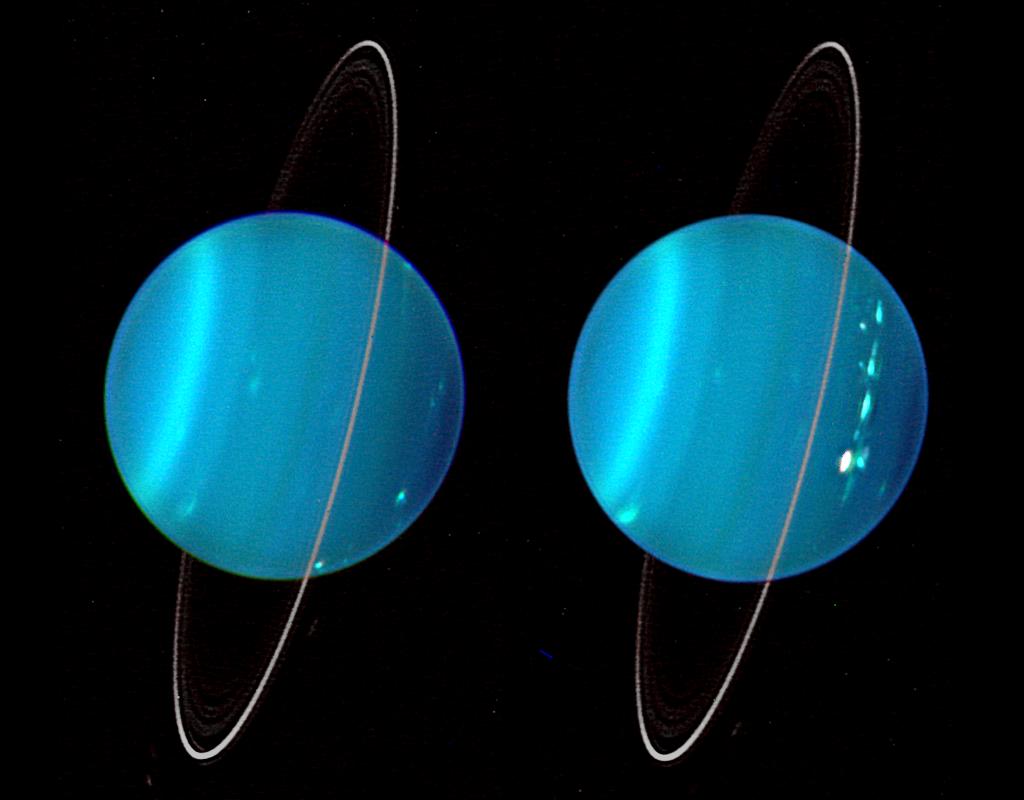This web page is created within BALTICS project funded from the European Union’s Horizon2020 Research and Innovation Programme under grant agreement No.692257.
Uranus
Uranus is the third largest and seventh furthest planet from the Sun. It is the first to be discovered by telescope.
It was noticed on March 31, 1871 by the English astronomer William Herschel, whose discovery was confirmed by the observations of the German astronomer Johann Bode. It was Bode who proposed to give the newly discovered planet the name of Uranus, the god of heaven mentioned in ancient Greek mythology.
Uranus is thought to have formed about 4.5 billion years ago from the gas and dust nebula in which the Sun was born. The giant planet formed closer to the Sun and over time its orbit has moved away.
Uranus is a cold and windy planet with a diameter of about 51,000 km. It is located about 2.9 billion km or 19.8 astronomical units from the Sun, whose light reaches Uranus in 2 hours and 40 minutes. One day on Uranus lasts 17 Earth hours, and one year – 84 Earth years. Uranus, like Venus, is a planet that spins around its axis in the opposite direction to other planets.
Uranus is the only planet in the solar system with rotational axis tilt of about 98 degrees, which is significantly different from other planets whose axis tilt is less than 30 degrees. It is possible that in the beginning of the solar system, an object the size of Earth or larger collided with Uranus, “overturning” the planet on its side.
This unusual location is the reason why Uranus has the most extreme seasons in the solar system. When one pole faces the Sun, the other is wrapped in complete darkness. It is a 21-year-old and dark winter night.
The planet is characterized by an unusual, irregularly shaped magnetic field, whose axis is tilted by 60 degrees from the axis of Uranus rotation. And the center of the magnetosphere, which is usually in the center of the planet, in the case of Uranus, is outside it – one-third from Uranus radius away from its center. Consequently, the auroras on Uranus do not match with the poles of the planet.
The atmosphere of Uranus consists mainly of hydrogen and helium, mixed with various ice-frozen gases. There is methane, ammonia and water ice. It is methane that provides the bluish-green color of Uranus by absorbing the red waves of the Sun’s visible light, reflecting back the rest of the light.
There is no consensus on the Uranus core. Some scientists believe that it is a small, round collection of hard rocks, while others advocate the idea that Uranus has no hard core at all, but a dense mixture of hard rocks and ice in the center.
Looking at Uranus in visible light, the planet seems monotonous and uninteresting, with very few clouds. But, in the infrared ray range reveals the stormy nature of Uranus, which becomes especially pronounced as the seasons change. Winds with speeds of up to 900 km/h are blowing in the vicinity of the equator as opposed to the direction in which the planet spins around its axis. In poles, on the other hand, they blow in the same direction as Uranus rotates around its axis. The temperature in the Uranus atmosphere drops to -220 degrees Celsius.
Uranus has 27 moons, whose names are not found in ancient Greek or Roman mythology, but in the works of William Shakespeare and Alexander Pope. In addition to moons, Uranus is surrounded by several thin rings.





















